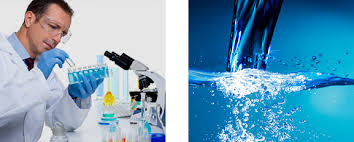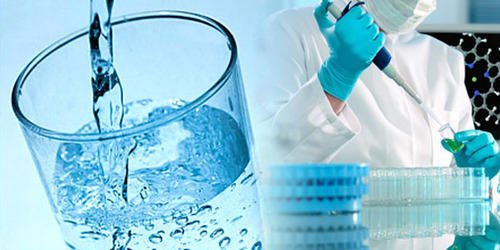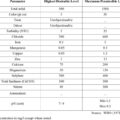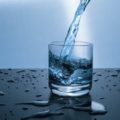Over 1 billion people lack access to safe water supplies, while 2.6 billion people lack adequate sanitation. Lack of sanitation leads to widespread microbial contamination of drinking water. Water-associated infectious diseases claim up to 3.2 million lives each year, approximately 6% of all deaths globally.
The burden of disease from inadequate water, sanitation, and hygiene totals 1.8 million deaths and the loss of greater than 75 million healthy life years. Each person needs 20 to 50 liters of water free of harmful chemical and microbial contaminants each day for drinking and hygiene. It is well established that investments in safe drinking water and improved sanitation show a close correspondence with improvement in human health and economic productivity. There remain substantial challenges to providing this basic service to large segments of the human population.
Water is essential to sustain life, and a satisfactory (adequate, safe and accessible) supply must be available to all. Improving access to safe drinking-water can result in tangible benefits to health. Every effort should be made to achieve a drinking-water quality as safe as practicable.
Safe and good quality drinking-water is suitable for all usual domestic purposes, including personal hygiene. However, water of higher quality may be required for some special purposes, such as renal dialysis and cleaning of contact lenses, or for certain purposes in food production and pharmaceutical use. Those who are severely immunocompromised may need to take additional steps, such as boiling drinking water, due to their susceptibility to organisms that would not normally be of concern through drinking-water.
Constituents of water or indicators of water quality
The main reason for not promoting the adoption of international standards for drinking-water quality is the advantage provided by the use of a risk–benefit approach (qualitative or quantitative) in the establishment of national standards and regulations. The nature and form of drinking-water standards may vary among countries and regions. There is no single approach that is universally applicable. It is essential in the development and implementation of standards that the current and planned legislation relating to water, health and local government are taken into account and that the capacity to develop and implement regulations is assessed.
Approaches that may work in one country or region will not necessarily transfer to other countries or regions. It is essential that each country reviews its needs and capacities in developing a regulatory framework. The judgement of safety – or what is an acceptable level of risk in particular circumstances – is a matter in which society as a whole has a role to play. The basic and essential requirements to ensure the safety of drinking-water are a “framework” for safe drinking-water, comprising health-based targets established by a competent health authority; adequate and properly managed systems (adequate infrastructure, proper monitoring and effective planning and management); and a system of independent surveillance.
Five Qualities Of A Good Water
Water quality is determined by physical, chemical and microbiological properties of water. These water quality characteristics throughout the world are characterized with wide variability.
Physical Characteristics of Water
Physical characteristics of water (temperature, color, taste, odor and etc.) are determined by senses of touch, sight, smell and taste. For example temperature by touch, color, floating debris, turbidity and suspended solids by sight, and taste and odor by smell.
Temperature
The temperature of water affects some of the important physical properties and characteristics of water: thermal capacity, density, specific weight, viscosity, surface tension, specific conductivity, salinity and solubility of dissolved gases etc. Chemical and biological reaction rates increase with increasing temperature. Reaction rates usually assumed to double for an increase in temperature of 10 °C. The temperature of water in streams and rivers throughout the world varies from 0 to 35 °C.
Color
Color in water is primarily a concern of water quality for aesthetic reason. Colored water give the appearance of being unfit to drink, even though the water may be perfectly safe for public use. On the other hand, color can indicate the presence of organic substances, such as algae or humic compounds. More recently, color has been used as a quantitative assessment of the presence of potentially hazardous or toxic organic materials in water.
Taste and Odour
Taste and odour are human perceptions of water quality. Human perception of taste includes sour (hydrochloric acid), salty (sodium chloride), sweet (sucrose) and bitter (caffeine). Relatively simple compounds produce sour and salty tastes. However sweet and bitter tastes are produced by more complex organic compounds. Human detect many more tips of odour than tastes. Organic materials discharged directly to water, such as falling leaves, runoff, etc., are sources of tastes and odour-producing compounds released during biodegradation.
Turbidity
Turbidity is a measure of the light-transmitting properties of water and is comprised of suspended and colloidal material. It is important for health and aesthetic reasons.
Solids
The total solids content of water is defined as the residue remaining after evaporation of the water and drying the residue to a constant weight at 103 °C to 105 °C. The organic fraction (or volatile solids content) is considered to be related to the loss of weight of the residue remaining after evaporation of the water and after ignition of the residue at a temperature of 500 °C. The volatile solids will oxidize at this temperature and will be driven off as gas. The inorganic (or fixed solids) remain as inert ash. Solids are classified as settleable solids, suspended solids and filterable solids. Settleable solids (silt and heavy organic solids) are the ones that settle under the influence of gravity. Suspended solids and filterable solids are classified based on particle size and the retention of suspended solids on standard glass-fiber filters.
Chemical Characteristics of Water
The chemical characteristics of natural water are a reflection of the soils and rocks with which the water has been in contact. In addition, agricultural and urban runoff and municipal and industrial treated wastewater impact the water quality. Microbial and chemical transformations also affect the chemical characteristics of water
Inorganic Minerals
Runoff causes erosion and weathering of geological formation, rocks and soils as the runoff travels to the surface-water bodies. During this period of contact with rocks and soils the water dissolves inorganic minerals, which enter the natural waters. Inorganic compounds may dissociate to varying degrees, to cations and anions.
Major Cations
Major cations found in natural water include calcium (Ca2+), magnesium (Mg2+), sodium (Na+) and potassium (K+). Calcium (Ca2+), is the most prevalent cation in water and second inorganic ion to bicarbonate in most surface water. The principal concern about calcium is related to the fact that calcium is the primary constituent of water hardness. Calcium precipitates as CaCO3 in iron and steel pipes. A thin layer of CaCO3 can help inhibit corrosion of the metal. However, excessive accumulation of CaCO3 in boilers, hot water heaters, heat exchangers, and associated piping affects heat transfer and could lead to plugging of the piping. Calcium concentration of up to 300 mg/L or higher have been reported. However, calcium concentrations of 40 to 120 mg/L are more common. SEE: World Health Organization (WHO) Drinking Water Standards Table
Benefits of High Water Quality
Promotes Overall Health
In view of the above risks threatening to compromise the quality of our water supply, it’s no surprise that the quality of our drinking water is directly related to our overall health. The Mayo Clinic outlines just how important water is to the healthy function of the human body. “Water is your body’s principal chemical component and makes up about 60 percent of your body weight. Your body depends on water to survive. Every cell, tissue and organ in your body needs water to work properly. For example, water:
- Gets rid of wastes through urination, perspiration and bowel movements
- Keeps your temperature normal
- Lubricates and cushions joints
- Protects sensitive tissues.”
Drinking enough water every day is important, to be sure. However, it’s just as important to ensure that the water we drink is not just the right quantity, but also the right quality.
Saves the Environment
Most homeowners who doubt the quality of their tap water supply seek safety by opting for bottled water instead. Still, this solution does not come without environmental cost. Go Green explains that “Despite the fact that tap water is declared safe for consumption by the EPA, 1500 plastic water bottles are being used every second in the United States alone.” To get a snapshot of the environmental impact of mass bottled water consumption, Go Green discusses the increasingly well-known fact that water bottles finally end up in overflowing in landfills, floating out at sea or in rivers, or littering sidewalks. “It was approximated that 46,000 pieces of plastic trash are floating on the ocean per square mile.
This plastic is killing animals, leaking chemicals and disrupting ecosystems,” they report. Yes, a single plastic water bottle can take as much as one thousand years to decompose, and in the process releases more toxic, cancer-causing chemicals into the soil and water. Not to mention the amount of fossil fuel and energy used to manufacture water bottles. Achieving high quality, safe-to-drink tap water in the home works to greatly minimize the demand, production, and consumption of plastic water bottles.
Protects Hair and Skin
Some homeowners reason that because they have chosen not to drink their tap water, it is unnecessary to act to improve the quality of the water in their home. Still, our daily activities involving water reach beyond simply drinking it. Every day we bathe or shower using tap water as well as use it to frequently wash our hands. Our bodies come into frequent contact with the tap water in our home. Impurities in the water supply can actually damage human hair.
For example, excess chlorine acts to break down proteins in the hair. Chlorine can also irritate the skin when showering. Other chemicals in the water can lead to skin dryness and irritation. Exposure to chemicals through bathing (such as the ones discussed at the outset) may even increase risk of cancer.
Extends Life of Your Appliances
High quality softened water can actually help your appliances run at top efficiency, including washing machines, water heaters, dish washers, and more. In a Water Quality Research Foundation (WQRF) study conducted by the Battelle Memorial Institute, data revealed that softened water helped major home appliances operate more efficiently in the long-run when compared to machines operating with hard water. In regards to water heaters, “the researchers found that when they used softened water, the units maintained their original factory efficiency rating for as long as 15 years. Running hard water through the units cut efficiency by up to 48 percent. Scale buildup shortened the lifespan of the heating elements inside electric water heaters, and some tankless water heaters using hard water failed after just 1.6 years.” Even the most high-end appliances will not be able to function properly long-term if the water is poor quality. Imagine the compounded cost of operating and frequently replacing major appliances simply because of low water quality.
Good Quality Water Saves Money
Achieving good, quality tap water in the home may require an investment of time, energy, and resources. Still, the return on investment may be more substantial than you think. Poor water quality can stain clothes, damage plumbing, hurt appliances, and force you to look outside the home for drinking water. All of these consequences of contaminated water represent wasted time and money.
Even more important, however, is the fact that unchecked water quality problems pose a serious health threat to you and your family. This could lead to the stressful medical bills and emotional pain associated with health problems.
Protects Pregnant Mothers and Babies
Clean, high quality water is especially crucial to the health of expecting mothers, developing babies, nursing mothers, and newborns. An Environmental Protection Agency (EPA) fact sheet regarding Home Water Testing advises “Test for nitrate in the early months of a pregnancy, before bringing an infant home, and again during the first six months of the baby’s life.” Indeed, studies have revealed that exposure to nitrates as well as other harmful contaminants in water (lead, pesticides, etc.) endangers the development of infants in utero as well as newborn babies. Pregnancy is a time to be extra vigilant as to ensuring and maintaining a high quality water supply in the home. In fact, clean water is important at all stages of life.







